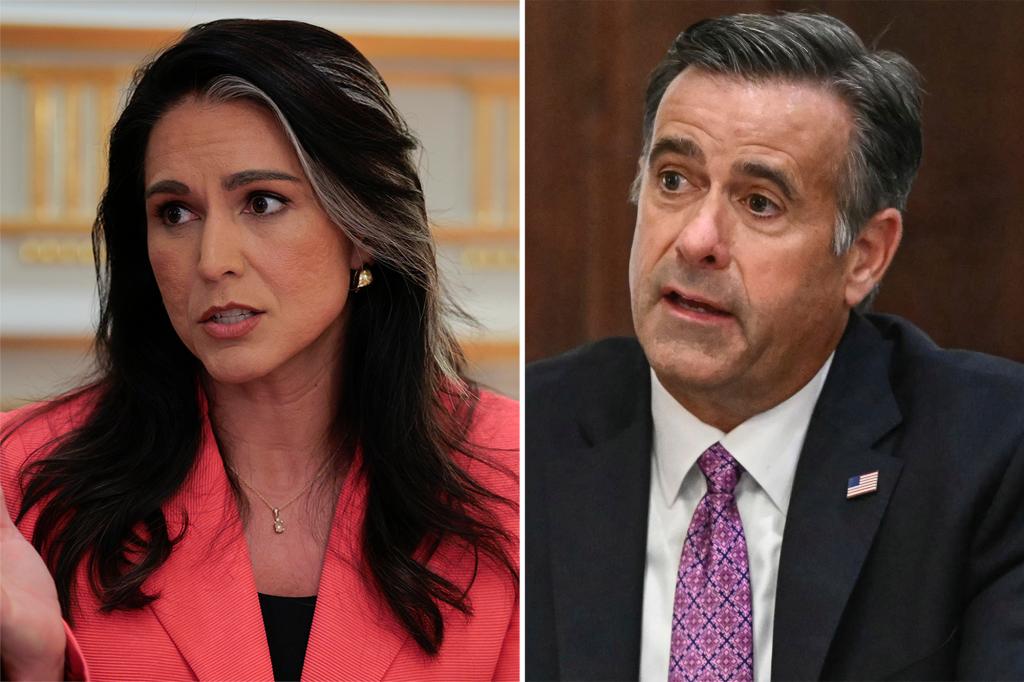Intelligence Clearance Revocations Spark Controversy: Examining the Delicate Balance of National Security and Transparency
In a striking move that has sent ripples through Washington’s intelligence community, Director of Intelligence Tulsi Gabbard revoked the security clearances of 37 intelligence professionals last week. This decisive action has sparked a particularly sensitive debate regarding one intelligence professional who some sources claim had been working undercover. The situation highlights the complex intersections of intelligence work, public profiles, and political considerations that define modern national security operations. The professional in question, who previously served as a national intelligence officer for Russia and Eurasia at the National Intelligence Council (NIC), has maintained a surprisingly public presence for someone potentially involved in covert operations—writing for prominent publications like The Atlantic and speaking at a public intelligence symposium as recently as four months ago.
The characterization of this individual’s role has become a point of contention among intelligence insiders. While one source insisted the person “had been working undercover” when their clearance was withdrawn, others firmly dispute this claim, describing them instead as “an analyst at a desk for her career” rather than “a covert operative.” This discrepancy raises significant questions about the nature of modern intelligence work and the increasingly blurred lines between analysts, public intellectuals, and covert operatives. Public records show that as recently as April, this intelligence professional was openly listed as a senior executive manager for the Europe and Eurasia Mission Center at the CIA and participated as a panelist at a professional intelligence symposium discussing the Russia-Ukraine conflict. The apparent transition from public-facing analyst to someone in a potentially covert role—if that indeed occurred—seems suspiciously timed according to some sources familiar with the situation.
The coordination process surrounding Gabbard’s clearance revocations has itself become controversial, with conflicting accounts emerging from within the intelligence establishment. A senior intelligence official maintained that “there was staff-level coordination between ODNI and CIA—and all other agencies involved—ahead of the revocations letter being sent,” suggesting proper protocols were followed. However, this assertion has been directly contradicted by another source familiar with the situation who claimed “there was no meaningful coordination” before the security clearances were stripped. This discrepancy points to potential disconnects between different intelligence agencies or factions within the intelligence community. CIA spokeswoman Liz Lyons addressed the broader context rather than these specific claims, stating that “Director Ratcliffe and the President’s entire elite national security team are committed to eradicating the politicization of intelligence and are focused on executing President Trump’s national security priorities, and keeping the American people safe.”
Gabbard’s memo that initiated these clearance revocations did not specify agency affiliations for any of the 37 individuals named, but made serious allegations that they had “abused public trust by politicizing and manipulating” information during their tenure. Many of those affected were reportedly involved in a now-controversial assessment of Russian influence in the 2016 election that was completed during former President Barack Obama’s administration. Others had publicly supported House Democrats’ first impeachment inquiry into former President Trump by co-signing a statement in September 2019. These political dimensions suggest that the clearance revocations may be part of a broader effort to address what the current administration perceives as past politicization of intelligence—a mission that CIA leadership has explicitly embraced according to their public statements.
The specific case of the intelligence professional at the center of this controversy reflects the complex career trajectories that characterize modern intelligence work. Their background includes serving as a national intelligence officer for Russia and Eurasia at the NIC from 2014 to 2017, information that was publicly disclosed in a biography accompanying an article they authored in Foreign Affairs in 2018. A Senate report from 2020 further revealed their involvement, along with Vinh Nguyen (another intelligence employee whose clearance was revoked), in the Obama-commissioned Intelligence Community Assessment regarding the 2016 presidential election. Both were identified as NIC members who collaborated with former DNI James Clapper on an intelligence product that the current administration has worked to discredit through declassified information released by both Ratcliffe and Gabbard. This professional background represents a common pattern in Washington, where intelligence professionals often move between government roles and positions at think tanks or academic institutions.
The tension between public engagement and classified intelligence work has never been more pronounced than in this case, where someone who had previously held a position as a nonresident scholar with the Russia and Eurasia Program at the Carnegie Endowment for International Peace may have later transitioned to more sensitive intelligence roles. This movement between public and private spheres, between academic discourse and classified analysis, represents both the strength and vulnerability of America’s intelligence apparatus. The revocation of security clearances for dozens of intelligence professionals—including potentially exposing someone in a covert position—raises profound questions about how the intelligence community balances accountability, political neutrality, and operational security in a deeply polarized era. As Washington continues to grapple with these tensions, the intelligence community must navigate complex terrain where national security imperatives intersect with political dynamics and public scrutiny in unprecedented ways.


